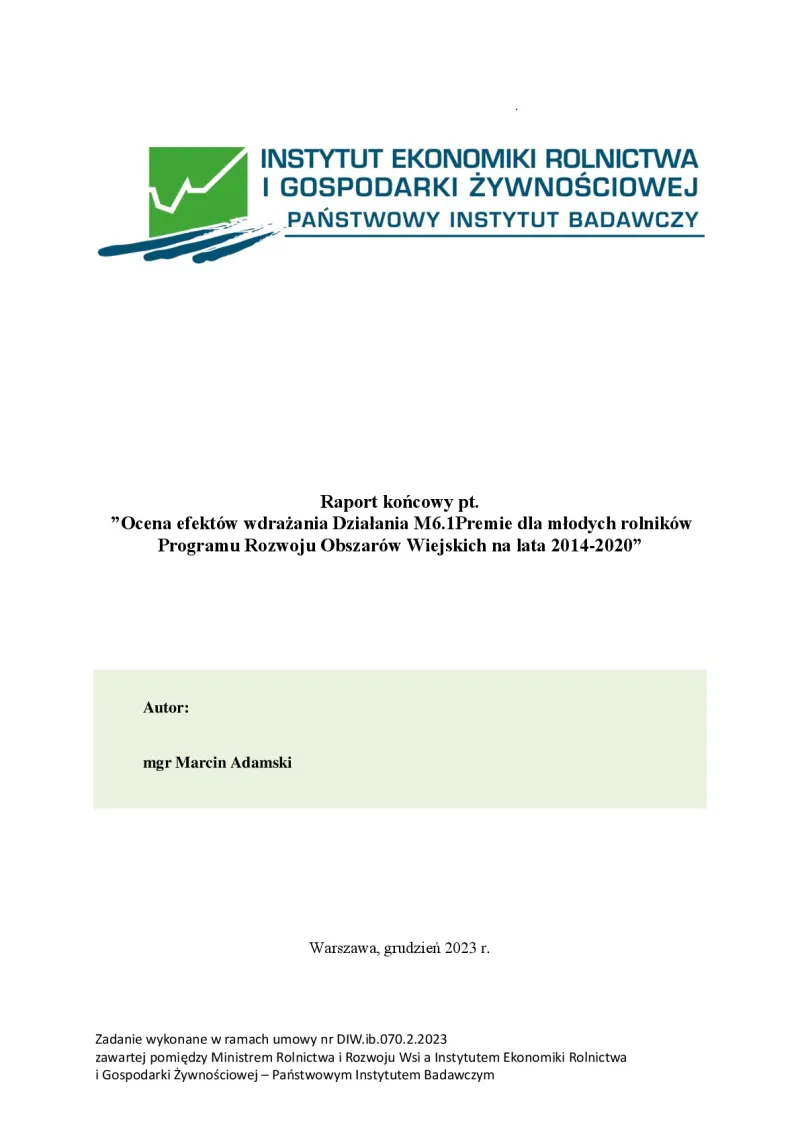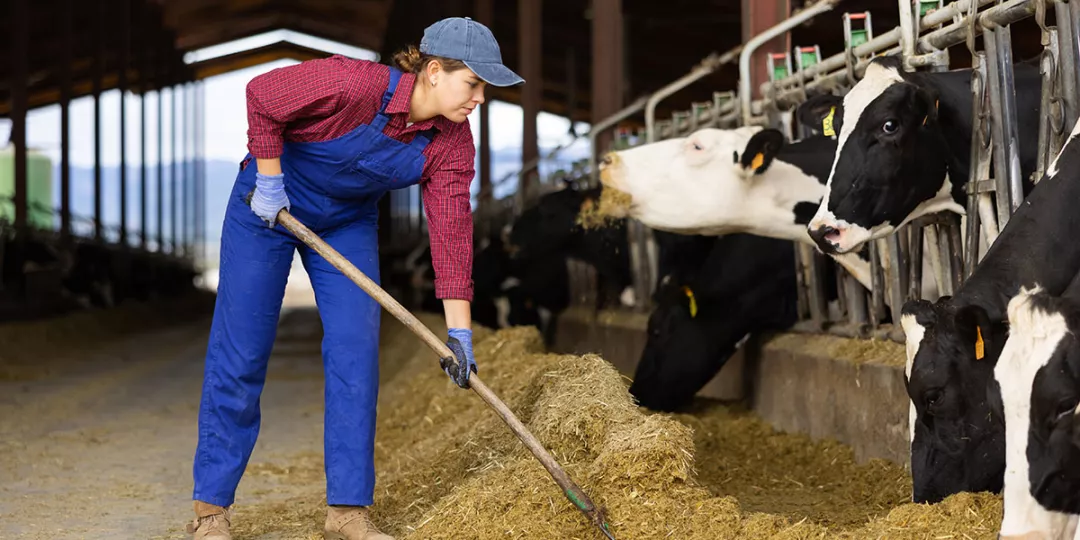Assessment of the effects of the implementation of Measure 6.1. (young farmers premiums)
The report analyses the effectiveness and consistency of the young farmers’ premium scheme by assessing whether it is consistent with its stated objectives and meets beneficiaries' needs.
- Poland
- 2014-2022
- Socio-economic impacts


The evaluation of Measure (M) 6.1 programme (young farmers premiums) focuses on assessing its contribution to attracting and sustaining young farmers, as well as facilitating sustainable business development in rural areas. This assessment primarily analyses the beneficiaries and investments made under the programme, covering all regions of Poland.
The primary objective of this evaluation is to determine whether the programme is relevant and effective. Specifically, the evaluation aims to answer the following research questions:
• Is the definition of beneficiaries, scope, conditions for granting aid, access criteria, project selection process and budget assumptions under the 2014-2020 Rural Development Programme measure consistent with the programme's objectives?
• Does the programme adequately address the needs of its beneficiaries?
Additionally, the evaluation seeks to assess whether and to what extent the contracted projects are achieving the expected output indicators.
The evaluation relies on the analysis of quantitative data provided by the Paying Agency, focusing on various indicators related to applications submitted under the programme. Descriptive statistics evaluate the programme's performance, including the number and percentage of applications.
The primary data source for the evaluation is application data obtained from the Paying Agency. The output indicators (O) for M06 include O1 - expenditure from public funds total, O3 - number of supported activities/operations, O4 - number of agricultural holdings/beneficiaries receiving support, and O5 - number of supported activities/operations of agricultural holdings/beneficiaries receiving support.
The evaluation concludes that Measure 6.1's objective to facilitate the entry of skilled farmers into the agricultural sector has been successfully achieved. A total of 26 947 beneficiaries began self-employment on farms through this programme, with 70% replacing a farm manager at least 25 years older than themselves.
However, the distribution of beneficiaries was not uniform across all communes, with 28% of communes lacking participants in the programme. This geographical variation does not necessarily indicate a mismatch between the aid instrument and the target group. It reflects the significant regional diversity in agricultural development and the pace of farm restructuring across Poland.
The programme is well suited to Polish farms' needs in terms of farm structure. However, demographic differences were noted, particularly the lower-than-average participation of women compared to national figures. Despite these differences, farms established under the program have generally experienced increased economic size.
An analysis of the share of young farmers benefiting from direct payments further confirmed significant variations across different communes. Additionally, an examination of investment structures tied to young farmers' business plans revealed that beneficiaries predominantly opted to purchase movable fixed assets, which accounted for nearly 70% of all investments.
The report suggests that future iterations of the programme should encourage beneficiaries to invest more in fixed assets, such as livestock buildings or the establishment of plantations. These investments are likely to contribute more significantly to increasing production volumes on these farms.
The programme has successfully met its primary goal of supporting the entry of young, skilled farmers into the agricultural sector. Despite regional and demographic variations, the program has been effective in fostering farm growth. However, more attention should be given to encouraging investments in fixed assets to maximise the programme's impact on agricultural production.
Author(s)
Instytut Ekonomiki Rolnictwa
i Gospodarki Żywnościowej – Państwowym Instytutem Badawczym